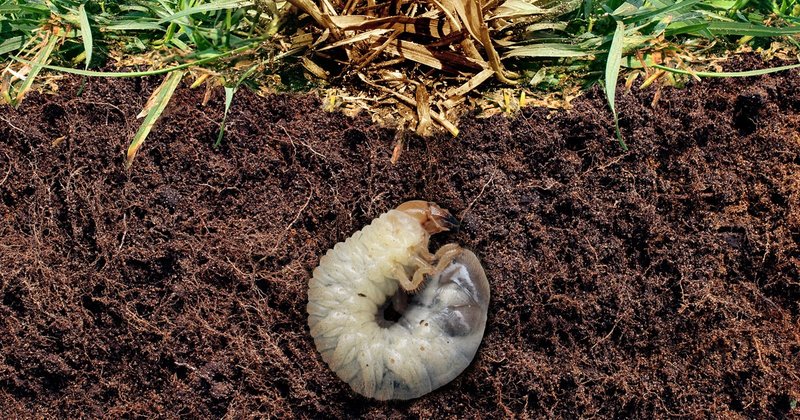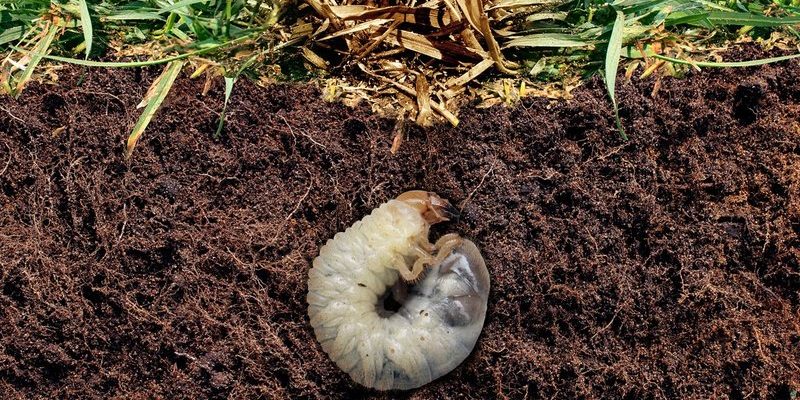
Understanding Grubs and Their Life Cycle
Before you launch into grub control treatments, it’s important to understand what you’re dealing with. Grubs are the larvae of various beetles, and they tend to thrive in your lawn during certain times of the year. Most commonly, you’ll encounter them in late summer or early fall when they’re munching away on your grass roots.
Let’s break it down: Grub larvae emerge from their eggs in late spring to early summer, and as they grow, they start feasting on those root systems that keep your grass healthy. By the time late summer rolls around, these little rascals are at their peak, making it the perfect time for you to step in with treatment. If you let them go unchecked, your lawn could end up with patches of dead grass, and no one wants that.
You might be wondering how to spot these grubs. It’s simple: just pull back some of the grass in a problematic area and look for small, white, “C”-shaped larvae. If you see more than a few per square foot, it’s time to take action!
Timing Your Treatments
Timing is crucial when it comes to grub control. The best results usually come from two main application periods. First, you’ll want to apply your treatment in late summer. This is when the grubs are young and still close to the surface, making it easier for the treatment to penetrate. Think of it as catching them while they’re still at the buffet rather than when they’ve already turned into beetles.
Second, a preventive application in the spring can also be beneficial. This is when the beetles are just about to lay eggs. Applying a preventative treatment during this time can stop the grubs from even hatching. It’s like putting a lock on the pantry before the snacks are gone!
Just a quick note: Always follow the instructions on the treatment product you choose. This ensures that you’re using it effectively and safely.
Types of Grub Control Treatments
When it comes to grub control treatments, you have a few options to choose from. Each has its pros and cons, so here’s a quick rundown:
- Granular Treatments: These are easy to apply and distribute evenly across your lawn. Just spread them around and water it in. They usually work well for young grubs.
- Liquid Treatments: These often offer a quicker action. They can be mixed with water and sprayed onto the lawn, targeting the grubs effectively. However, they usually require a bit more equipment.
- Beneficial Nematodes: These are tiny worms that attack grubs. They’re a natural option and great if you’re trying to avoid chemicals. However, they need moist conditions to survive.
Each type of treatment has its ideal timing and application method, so consider factors like lawn size and your comfort level with applying treatments. Finding the right match for your needs is crucial for success!
Signs of Grub Infestation
Before you dive into treatments, you’ll want to properly assess if you actually have a grub problem. Here are some telltale signs to watch for:
- Patchy Grass: If you see brown patches in your lawn, it might be a sign of grubs damaging your grass roots.
- Brown, Wilting Grass: Areas that feel spongy when walked on can indicate grub damage, as the roots are being chewed away.
- Increased Animal Activity: If you notice more birds or raccoons digging in your yard, they might be hunting for grubs, tipping you off to their presence.
If you spot these signs, don’t fret! You’re already one step closer to reclaiming your lawn’s health. Just remember to think about the timing of your treatment as you move forward.
Post-Treatment Care
Once you’ve applied your grub control treatment, the job isn’t completely done. You’ll want to give your lawn some extra TLC to help it recover. Here are a few steps to take:
- Watering: After applying the treatment, water your lawn lightly to help the chemicals penetrate the soil and reach the grubs. But don’t drown it!
- Fertilizing: Consider adding a nitrogen-rich fertilizer after the treatment. This can help your grass bounce back and fill in any damaged areas.
- Monitoring: Keep an eye on your lawn over the next few weeks. Check for any new signs of grub activity and address any issues right away.
Taking these steps will help your lawn recover faster and look better than ever.
Common Mistakes to Avoid
Even seasoned gardeners can make mistakes when it comes to grub control. Here are some common pitfalls to avoid:
- Applying at the Wrong Time: Timing your application is vital. Treating too early or too late can lead to ineffective results.
- Ignoring Instructions: Every treatment is different, so follow the directions on the label closely. It’s your best guide to success.
- Neglecting Lawn Health: Don’t focus solely on grubs. Maintain overall lawn health by mowing, watering, and fertilizing as needed.
Learning from these mistakes can save you time and money, and help keep your lawn in top shape.
Applying grub control treatments may feel a bit like a guessing game, but with the right knowledge and timing, you can tackle those pesky pests head-on. Remember, the best times to apply are late summer for active grubs and spring for prevention. With the appropriate treatments and a bit of aftercare, your lawn can bounce back beautifully.
Keeping an eye out for signs of grub damage and avoiding common mistakes will set you up for success. So go ahead, take a proactive approach, and watch your lawn thrive. With time, effort, and a little patience, you’ll soon enjoy a lush, green yard free from grub troubles!

